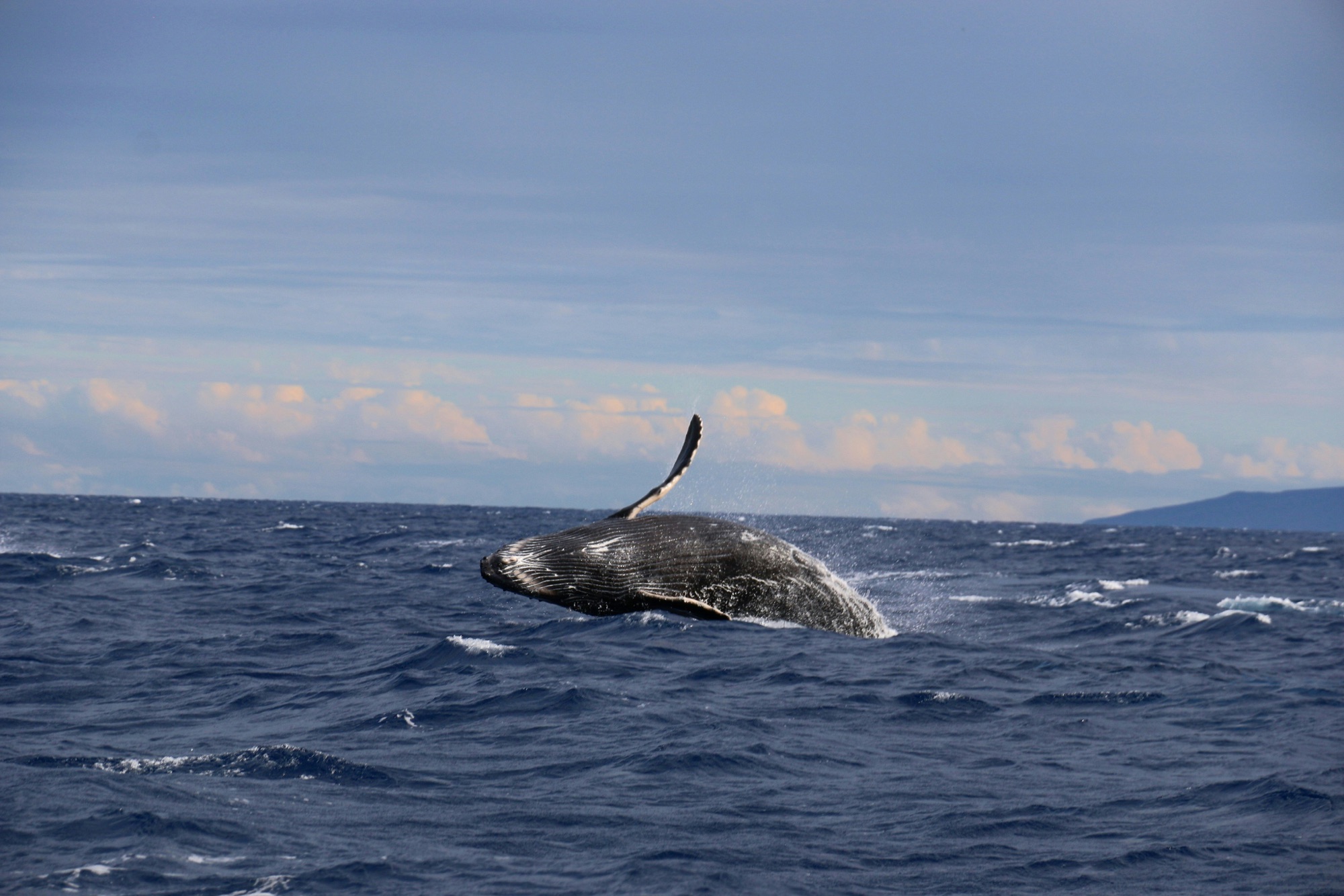Blue whales, the gentle giants of the sea, are not only the largest animals on Earth but also among the most fascinating. Despite their massive size, there are numerous surprising facts about them that most people don’t know. Whether you’re a marine enthusiast or simply curious about these majestic creatures, learning more about blue whales can be an awe-inspiring journey. In this article, we’ll dive into 14 surprising facts about blue whales that will expand your understanding of these extraordinary creatures.
1. The Largest Animal to Have Ever Lived
When people think of large animals, elephants or dinosaurs may come to mind, but the blue whale dwarfs them all. These massive creatures can grow to be over 100 feet long and weigh up to 200 tons. That makes them not just the largest animals alive today, but the largest animals to have ever existed. This fact alone makes the blue whale an incredible part of our planet’s biodiversity.
To put it into perspective, a blue whale is about the length of three school buses, and its weight equals that of about 33 African elephants. Even more astonishing, it’s estimated that a blue whale’s tongue alone can weigh as much as an adult elephant.
2. A Heart the Size of a Small Car
With such a massive body, it’s no surprise that blue whales have enormous internal organs. One of the most extraordinary features is their heart, which is approximately the size of a small car. Weighing about 1,300 pounds, their heart beats powerfully to pump blood throughout their gigantic body.
In fact, a blue whale’s heartbeat can be heard from about two miles away underwater. When the whale dives, the heart rate drops significantly to conserve oxygen. Researchers have recorded heart rates as low as two beats per minute during deep dives and around five to ten beats per minute when near the surface.
3. Their Tongue Weighs as Much as an Elephant
Not only is the blue whale the largest animal, but many of its body parts are also massive in comparison to other animals. For example, the blue whale’s tongue can weigh as much as an elephant, or up to three tons. Their tongue is strong enough to push enormous amounts of water out of their mouth after filtering food, while their throat is surprisingly small.
Despite their immense size, blue whales have a throat no larger than a grapefruit. This means they cannot swallow large objects and must stick to their main food source—tiny krill.
4. Blue Whales Consume 4 Tons of Food Per Day
Blue whales have a diet mainly composed of krill, which are small, shrimp-like crustaceans. They use a method called filter feeding to eat, taking in large amounts of water filled with krill, then using their baleen plates to filter out the food while expelling the water. Despite the tiny size of krill, blue whales can consume an astonishing four tons of these creatures per day during feeding season.
A single adult blue whale can eat up to 40 million krill in a day. This intensive feeding process helps them build up reserves for their long migrations, where food can be scarce.
5. Their Blubber Acts as an Energy Reserve
The blubber of a blue whale is crucial to its survival. This thick layer of fat, which can be over a foot thick in some areas, serves multiple purposes. Primarily, it acts as an energy reserve, allowing the whale to go long periods without eating while migrating. During these times, the whale will live off the stored fat in its blubber, which can account for up to 50% of its body mass.
Blubber also provides insulation in the cold waters of the oceans, helping blue whales maintain their body temperature. Additionally, it plays a role in buoyancy, helping the whale float.
6. Blue Whales Have Unique Vocalizations
One of the most distinctive features of blue whales is their vocalizations. They produce a series of low-frequency pulses, groans, and moans that are often below the range of human hearing. These sounds are thought to play a key role in communication, navigation, and potentially even locating food.
Their songs can travel for hundreds of miles underwater, making them one of the loudest animals on Earth. Some blue whale sounds have been recorded at over 180 decibels, which is louder than a jet engine. Scientists believe that these vocalizations are used to help blue whales communicate with each other across vast distances in the ocean.
7. They Migrate Thousands of Miles
Blue whales are known for their long migrations. They typically spend the summer months feeding in cold, nutrient-rich waters near the poles and then migrate thousands of miles to warmer waters near the equator to breed and give birth during the winter.
Some populations of blue whales migrate up to 12,000 miles each year, making it one of the longest migrations of any animal on Earth. These migrations are vital for their survival, as the warmer waters provide a safe environment for their calves, while the colder waters offer a more abundant food supply.
8. They Give Birth to the Largest Babies in the Animal Kingdom
Blue whale calves are the largest babies on Earth. When born, a blue whale calf can measure up to 26 feet in length and weigh around 8,000 pounds—about the size of an adult African elephant. They grow rapidly, gaining as much as 200 pounds per day during the first year of life by feeding on their mother’s milk, which is 40-50% fat.
This incredible growth is necessary, as calves need to build up strength and fat reserves before embarking on long migrations with their mothers.
9. Blue Whales Have Baleen Instead of Teeth
Unlike many marine animals, blue whales don’t have teeth. Instead, they have baleen plates, which are made of keratin, the same material found in human hair and nails. These baleen plates act like a sieve, allowing the whale to filter krill and other small organisms from the water.
When the whale takes a mouthful of water and krill, it closes its mouth and pushes the water out through the baleen, trapping the krill inside to be swallowed.
10. Their Color Isn’t Truly Blue
While blue whales are called “blue,” their true color can be misleading. These whales appear blue underwater, but their actual color is a mottled gray. When they surface and are exposed to sunlight, they take on a bluish hue due to the way light reflects off the water and their skin.
In certain lighting conditions, their gray skin may even appear slightly greenish, due to the microorganisms that attach to their skin as they swim through the ocean.
11. Blue Whales Can Live for Over 80 Years
Blue whales have a long lifespan, typically living for 70 to 80 years, though some individuals have been known to live for over 90 years. Scientists can determine the age of a blue whale by examining their earplugs, which accumulate layers over time, much like the rings of a tree.
This longevity is a testament to their survival skills, though they are still vulnerable to threats such as ship strikes, entanglement in fishing gear, and environmental changes.
12. Their Population Is Slowly Recovering
Blue whales were heavily hunted during the whaling era, which drastically reduced their population. In the early 20th century, blue whale populations plummeted due to extensive whaling for their oil and blubber. By the time whaling was banned in 1966, their numbers had dropped by as much as 90%.
Today, thanks to conservation efforts, the blue whale population is slowly recovering, though they remain endangered. It is estimated that there are now between 10,000 and 25,000 blue whales in the world, with the population increasing at a slow but steady pace.
13. Blue Whales Can Swim at Surprising Speeds
Despite their massive size, blue whales are capable of moving quickly when necessary. Normally, they swim at a leisurely pace of about 5 miles per hour, but they can accelerate to speeds of up to 20 miles per hour when threatened or during migration.
This ability to swim swiftly is particularly useful during their long migrations, allowing them to cover vast distances in a relatively short amount of time.
14. They Help Maintain the Ocean Ecosystem
As apex consumers, blue whales play a critical role in the marine ecosystem. Through their feeding habits, they help regulate krill populations, which are a key part of the ocean food chain. Additionally, when blue whales defecate, their waste provides vital nutrients that promote the growth of phytoplankton, the base of the marine food web.
Phytoplankton not only serves as food for many marine species but also produces a significant amount of the world’s oxygen through photosynthesis. Thus, blue whales contribute indirectly to maintaining the health of the ocean and the planet as a whole.
Final Thoughts
The blue whale is a marvel of the natural world, with its immense size, unique adaptations, and vital role in the ocean ecosystem. Despite their vulnerable status, blue whales have shown remarkable resilience, and ongoing conservation efforts are crucial to ensuring their survival. As we continue to learn more about these gentle giants, their mystery and magnificence remain a powerful reminder of the wonders of the deep sea.




